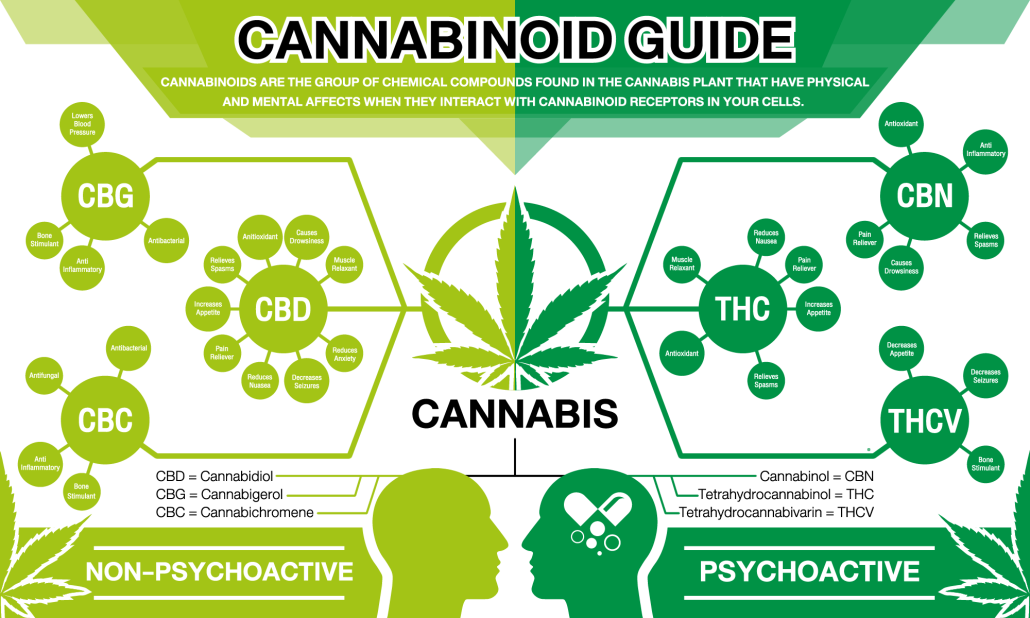Learn about cannabinoids like THC and CBD, their effects, minor cannabinoids such as CBG and CBN, and how they interact with the body’s endocannabinoid system.
Cannabinoids are the most important compounds in the cannabis plant. They shape how cannabis makes you feel, and they also have a wide range of potential medical and wellness applications.
In this article, we will explain what cannabinoids are, highlight the most common types like THC and CBD, and also introduce minor cannabinoids such as CBG, CBN, and CBC. You will also learn how these compounds interact with the body’s endocannabinoid system and why the so-called entourage effect makes every strain unique.
🔑 What Are Cannabinoids?
Cannabinoids are natural chemical compounds produced by the cannabis plant. Scientists have identified more than 100 cannabinoids so far. The most famous are THC and CBD, but each one contributes in its own way to the plant’s overall effect.
Cannabinoids interact with a special network in the human body called the endocannabinoid system (ECS). This system helps regulate mood, appetite, memory, sleep, and immune function. When you consume cannabis, cannabinoids bind with ECS receptors and influence the way your body and brain respond.
Learn more about the Endocannabinoid System in our guide here.
🌱 Major Cannabinoids
THC (Tetrahydrocannabinol)
- The main psychoactive compound in cannabis.
- Responsible for the “high” feeling, euphoria, and sensory changes.
- Can help with pain relief, nausea, and appetite stimulation.
- High doses may cause anxiety, paranoia, or racing thoughts in some users.
CBD (Cannabidiol)
- Non-psychoactive (does not cause a high).
- Studied for calming, anti-anxiety, and anti-inflammatory effects.
- Commonly found in oils, capsules, and wellness products.
- May balance out some of THC’s stronger effects.
For a more detailed comparison, see our CBD vs THC article.
🌿 Minor Cannabinoids You Should Know
Cannabis is not just THC and CBD. Smaller cannabinoids are gaining attention for their unique benefits:
- CBG (Cannabigerol) → Sometimes called the “mother cannabinoid” because many others are derived from it. Early studies suggest it may support focus and gut health.
- CBN (Cannabinol) → Formed when THC ages. Often associated with sedation and “sleepy” effects.
- CBC (Cannabichromene) → Non-psychoactive and being studied for mood improvement and inflammation relief.
External source: Read more about cannabinoids from Project CBD.
🌐 The Entourage Effect
One of the most fascinating aspects of cannabinoids is how they work together. This is called the entourage effect. Instead of acting alone, cannabinoids, terpenes, and other compounds combine to create unique results.
For example:
- A strain high in THC and limonene might feel energetic and uplifting.
- A strain with THC, myrcene, and CBN may feel more sedating.
Therefore, two cannabis strains with the same THC percentage can produce completely different experiences because of their cannabinoid and terpene profile.
🧠 Cannabinoids and the Human Body
The interaction between cannabinoids and the ECS explains why cannabis is so versatile. Depending on the ratio of compounds, cannabis can help people relax, focus, relieve pain, or improve sleep.
Some examples of potential areas of impact:
- Medical use: pain, nausea, epilepsy, anxiety.
- Wellness: stress management, relaxation, appetite support.
- Recreational: enjoyment, creativity, and social experiences.
📊 Key Takeaways
- Cannabis contains over 100 cannabinoids, not just THC and CBD.
- THC causes the high, while CBD is calming and non-intoxicating.
- Minor cannabinoids like CBG, CBN, and CBC add unique effects.
- All cannabinoids work together in the entourage effect.
- They influence the body through the endocannabinoid system.
📌 Conclusion
Cannabinoids are the chemical building blocks of cannabis. They determine how different strains feel, taste, and affect the human body. By learning about THC, CBD, and their lesser-known cousins, you can better understand why cannabis is such a complex and fascinating plant.
Want to dive deeper? Explore our guides on terpenes, the endocannabinoid system, and the history of cannabis.
Image suggestion: an infographic showing THC, CBD, and minor cannabinoids with their effects.


Leave a Reply